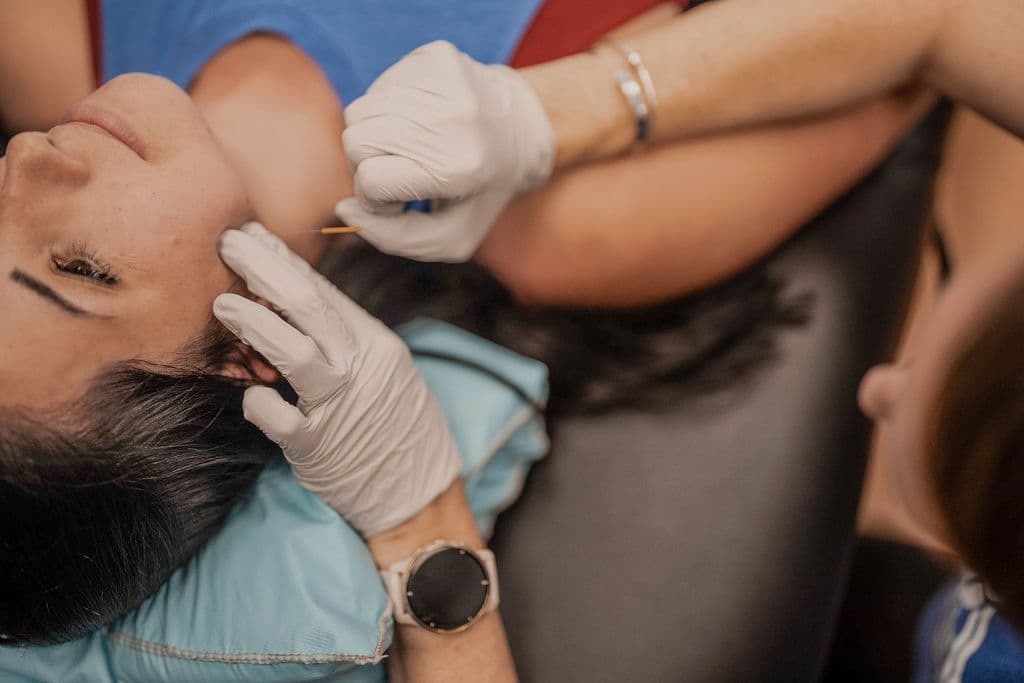Dry needling is a modern, evidence-based technique used by physical therapists to treat muscle...
How Dry Needling Can Improve Mobility and Flexibility
Mobility and flexibility are essential components of healthy, pain-free movement—especially for active individuals and athletes. Yet many people experience tightness, stiffness, or restricted range of motion that limits performance or everyday function. One of the most common culprits? Muscle tension caused by overuse, poor movement patterns, or prolonged sitting.
When muscles are chronically tight, they can develop what are known as trigger points—hyperirritable spots that shorten the muscle fibers and reduce their ability to lengthen fully. These trigger points not only restrict flexibility, but also interfere with joint mechanics, making movement feel limited or uncomfortable.
READ: Unlocking the Power of Dry Needling: Effective Pain Relief and Muscle Recovery in Wilmington, NC
Over time, this lack of mobility can lead to compensatory movement patterns, increase injury risk, and decrease overall performance. That’s where targeted interventions like dry needling come in. By addressing muscle tension at its source, dry needling helps restore the natural length and elasticity of muscles, which directly improves range of motion and flexibility.
 What Is Dry Needling and How Does It Work?
What Is Dry Needling and How Does It Work?
Dry needling is a modern technique used by licensed physical therapists to treat muscle dysfunction, reduce pain, and improve mobility. It involves the insertion of thin, sterile, monofilament needles into specific myofascial trigger points—tight knots in muscle tissue that contribute to stiffness and movement limitations.
Unlike acupuncture, which follows traditional Chinese medicine principles, dry needling is rooted in Western anatomical and neurophysiological science. The goal is to target and release areas of muscular tightness that restrict movement and cause discomfort.
When a needle is inserted into a trigger point, it often elicits a local twitch response—an involuntary contraction that signals the muscle is releasing tension. This response is key to restoring normal muscle tone, improving circulation, and decreasing the neurological sensitivity that keeps muscles "on guard."
At Paradigm Performance Therapy in Wilmington, dry needling is used in conjunction with movement-based therapy and corrective exercise. It’s not just about relaxing a tight muscle—it’s about unlocking the body’s natural movement capacity and building long-term resilience.
How Dry Needling Supports Greater Range of Motion
When a muscle is chronically tight or guarded, it resists lengthening—even when you stretch. This tension can pull on joints, limit movement, and alter how your body performs daily tasks or athletic activities. Dry needling addresses these restrictions by targeting the root cause: the neuromuscular system.
READ: Maximize Your Athletic Performance with Performance Physical Therapy in Wilmington, NC
By inserting a needle directly into a dysfunctional muscle, dry needling triggers a release of built-up tension and resets the muscle’s resting tone. This release often leads to immediate improvements in tissue extensibility, allowing the muscle to move more freely and with less resistance.
What makes dry needling unique is its ability to influence both the mechanical and neurological components of muscle tightness. Mechanically, it disrupts adhesions and improves local blood flow. Neurologically, it helps “turn off” the hyperactive signaling that causes a muscle to stay tight long after the original stressor is gone.
When combined with guided mobility work and strength training—core elements of the approach at Paradigm Performance Therapy—dry needling becomes a powerful tool for restoring normal movement patterns. Clients often experience increased joint range of motion, smoother movement transitions, and better postural control as part of their overall recovery and performance strategy.
Who Benefits Most from Dry Needling for Flexibility?
Dry needling can benefit a wide range of individuals, but it's especially helpful for those struggling with flexibility and mobility due to chronic muscle tightness or soft tissue restrictions. At Paradigm Performance Therapy, we often see clients who have tried stretching, foam rolling, or massage with limited results—dry needling offers a more direct solution.
Here are a few groups who often benefit the most:
Active Adults and Athletes
Whether you’re lifting, running, cycling, or practicing yoga, flexibility plays a key role in performance. Dry needling helps release tight muscle groups that limit stride length, shoulder mobility, or spinal rotation, making movement more fluid and efficient.
Individuals with Desk Jobs or Sedentary Routines
Prolonged sitting leads to tight hip flexors, hamstrings, and upper back muscles. Dry needling can help reverse the muscular imbalances caused by long hours at a desk, restoring postural alignment and improving overall movement quality.
Those Recovering from Injury or Surgery
Scar tissue, muscle guarding, and compensatory patterns can restrict mobility after an injury. Dry needling can reduce soft tissue restrictions and help restore normal range of motion during the rehab process.
Clients With Chronic Stiffness or Recurrent Tightness
If you feel like you’re constantly stretching but never gaining flexibility, dry needling may be the missing piece. By resetting neuromuscular tone, it allows your body to respond better to movement and flexibility training.
Ultimately, dry needling is most effective when it’s part of a comprehensive plan—one that includes movement assessment, corrective exercise, and hands-on therapy. That’s exactly how we approach it at Paradigm Performance Therapy.
READ: Recovery Strategies for Athletes: The Power of Physical Therapy in Wilmington, NC
Dry Needling at Paradigm Performance Therapy: What to Expect
At Paradigm Performance Therapy in Wilmington, dry needling is always personalized. Your first visit starts with a full-body movement assessment to identify the root causes of tightness, restriction, or compensatory movement patterns. From there, your physical therapist will determine whether dry needling is appropriate for your specific goals.
During treatment, thin, sterile needles are inserted into the identified trigger points. You may feel a brief muscle twitch or a dull ache—both are normal responses that indicate the muscle is releasing tension. The process is generally well-tolerated, and most clients report feeling looser and more mobile afterward.
After dry needling, we often pair the treatment with mobility drills or strength-based exercises to reinforce better movement patterns. This combination leads to longer-lasting improvements and helps you move with greater freedom and confidence.
Whether you’re a weekend warrior, a competitive athlete, or someone simply looking to move better and feel less restricted, dry needling at Paradigm can help you unlock your full range of motion.
Ready to feel the difference? Contact us to schedule your session and start moving the way your body was meant to.




